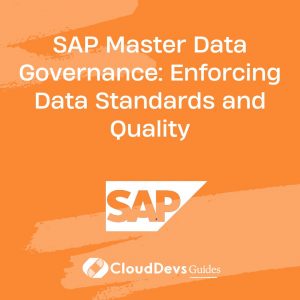SAP Security: Protecting Your Business-Critical Information
In today’s digital age, businesses rely heavily on enterprise software systems like SAP (Systems, Applications, and Products) to manage their critical operations. SAP applications are integral to various business processes, from finance and human resources to supply chain management and customer relationship management. However, with this increasing reliance on SAP systems, the need for robust SAP security measures has become paramount. In this blog, we will explore the world of SAP security, its importance, and how you can protect your business-critical information effectively.
1. Understanding SAP Security
1.1 What Is SAP Security?
SAP security is a set of measures, protocols, and best practices designed to protect the confidentiality, integrity, and availability of data within SAP systems. It encompasses various aspects, including user access control, data encryption, vulnerability management, and auditing, all aimed at preventing unauthorized access and ensuring data remains secure.
1.2 The Significance of SAP Security
1.2.1 Safeguarding Sensitive Data
One of the primary reasons SAP security is crucial is the vast amount of sensitive data stored in SAP systems. This data can include financial records, customer information, intellectual property, and more. Any breach could lead to severe financial losses, regulatory penalties, and damage to your organization’s reputation.
1.2.2 Compliance Requirements
Many industries have stringent regulatory requirements governing data protection and privacy. Ensuring SAP security not only protects your data but also helps your organization comply with regulations like GDPR, HIPAA, and SOX.
1.2.3 Mitigating Cyber Threats
Cyberattacks targeting SAP systems are on the rise. These attacks can result in data theft, disruption of business operations, and financial losses. Robust SAP security measures are essential to mitigate these threats effectively.
2. Key Components of SAP Security
2.1 User Authentication and Authorization
2.1.1 Role-Based Access Control (RBAC)
Role-Based Access Control is a fundamental concept in SAP security. It involves defining roles and responsibilities for each user and granting permissions accordingly. By implementing RBAC, you can ensure that users only have access to the resources necessary for their job functions.
abap
DATA: lt_roles TYPE STANDARD TABLE OF s_user,
ls_role TYPE s_user.
* Populate the role data
ls_role-username = 'JohnDoe'.
ls_role-role = 'Accounts Payable'.
APPEND ls_role TO lt_roles.
* Grant authorization based on roles
LOOP AT lt_roles INTO ls_role.
CALL FUNCTION 'S_USER_AUTHORITY'
EXPORTING
user = ls_role-username
auth = ls_role-role.
ENDLOOP.
2.2 Encryption
2.2.1 Data Encryption at Rest and in Transit
Encrypting data at rest and in transit is essential for safeguarding sensitive information. SAP systems support various encryption methods, including Secure Sockets Layer (SSL) for data in transit and Transparent Data Encryption (TDE) for data at rest.
abap * Enable SSL encryption for SAP system SAPSECULIB->SSLOptions = '1'. * Configure TDE for database encryption ALTER DATABASE ENCRYPTION ON;
2.3 Vulnerability Management
2.3.1 Regular Security Patching
SAP frequently releases security patches to address vulnerabilities in their software. Keeping your SAP systems up to date with the latest patches is crucial for protecting against known security issues.
abap * Check for available SAP security patches SAPCAR -xvf <patch_file>.SAR
2.4 Logging and Auditing
2.3.2 Security Logs
Maintaining detailed security logs is essential for monitoring user activities and detecting any suspicious or unauthorized access. SAP provides tools for configuring and reviewing security logs.
abap * Configure security audit log parameters RZ11 - Set audit log parameters.
3. Best Practices for SAP Security
3.1 Regular Security Training
3.1.1 Employee Awareness
Educating your employees about security best practices is a vital aspect of SAP security. Conduct regular training sessions to ensure that your staff understands the risks and knows how to protect sensitive data.
3.2 Periodic Security Assessments
3.2.1 Vulnerability Scanning
Perform regular vulnerability scans on your SAP systems to identify potential weaknesses. Address any vulnerabilities promptly to reduce the risk of exploitation.
abap * Run a vulnerability scan on SAP system Nessus -host <hostname> -p <port> -scan_type <type>.
3.3 Incident Response Plan
3.3.1 Preparing for Security Incidents
Develop a robust incident response plan that outlines the steps to take in the event of a security breach. Having a well-defined plan can minimize the damage caused by a security incident.
abap * Sample incident response plan 1. Isolate affected systems. 2. Notify relevant authorities. 3. Collect evidence for investigation. 4. Remediate the breach. 5. Communicate with stakeholders.
Conclusion
SAP security is a critical aspect of modern business operations. Protecting your business-critical information is not only essential for data integrity but also for regulatory compliance and maintaining customer trust. By implementing the key components and best practices discussed in this blog, you can strengthen your SAP security posture and ensure that your organization’s data remains safe from threats and breaches.
In an increasingly interconnected world, the importance of SAP security cannot be overstated. As businesses continue to rely on SAP systems to drive their operations, the need to safeguard sensitive information becomes paramount. This blog has provided an overview of SAP security, its significance, key components, and best practices. By understanding and implementing these security measures, you can protect your business-critical information and reduce the risk of security breaches.
Remember, SAP security is an ongoing process. Regularly review and update your security measures to stay ahead of emerging threats and ensure the long-term security of your SAP systems. Your organization’s reputation and financial stability depend on it.
Table of Contents









